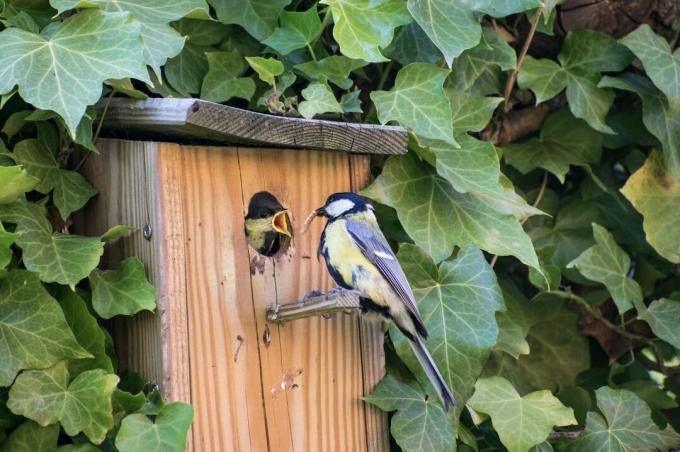Which birds prefer which nesting sites? Which nesting sites can be found in your own garden and how can you create additional nesting opportunities? We would like to answer these questions for you in our information article.

Different bird species sometimes have very different requirements for their nesting sites. But which bird builds which nest? Some prefer lofty heights in the crowns of trees, some prefer to stay close to the ground, and still others have made man-made structures, such as building or wall niches, their own. However, all nesting sites must meet one important requirement: they must be safe from predators and other dangers. Whether hidden in dense vegetation or protective caves - the nest is and remains a nursery and its location therefore needs to be carefully considered. Here you can find out which bird species prefer which nesting sites and how you can create a home for a wide variety of garden birds in your own garden.
"Contents"
- Nest site types and their inhabitants
- Bird nesting sites in the garden
- Nest boxes and other nesting aids
Nest site types and their inhabitants
Birds can be classically divided into three different nesting types. cave breeders for example, they breed in tree cavities or building niches and usually only build a sparse nest made of soft materials on the ground feathers, moss or animal hair. The classic cave breeders include the blue tit, the nuthatch or the great spotted woodpecker. as freebreeder On the other hand, birds are called that build a free-standing nest from twigs and other plant fibers in trees, hedges or shrubs. These include, for example, the blackbird, that robin or the chaffinch. ground breeders, like the partridge, the skylark or the lapwing also build free-standing nests, but breed directly on the ground - for example in meadows or fields.
Last but not least, there is also a native bird that does not build its own nest at all. the cuckoo has learned to lay its eggs in other people's nests, thus saving itself the efforts of the brood care.

tip: Have you ever wondered if birds also sleep in nests or where they spend the night instead? Find answers to these questions in our article “Where do birds sleep?“.
Overview: Different nest types
- Cave breeders: blue tit, nuthatch, great spotted woodpecker
- Free breeders: blackbird, robin, chaffinch
- Ground-breeders: partridge, skylark, lapwing
Notice: Not every bird builds a nest every season. It is often only mated birds that build a breeding ground together. Unmated animals or young animals that are not yet sexually mature usually do not build a nest. However, in some species that live in social groups, such unmated birds help their relatives in raising their young. More information about bird mating can be found in our special article.
Bird nesting sites in the garden
There can also be good nesting opportunities for native wild birds in your own garden. This applies mainly to free breeders that settle in the dense vegetation of trees, hedges and shrubs, and cave breeders, the knotholes or old woodpecker holes in trees or building and wall niches on houses or barns to use. Ground breeders, on the other hand, are rarely guests in gardens, as they prefer large meadows or fields and often do not feel safe in residential areas due to the large number of house cats.
Nest boxes and other nesting aids
If old trees and niche-rich buildings are missing, you can create excellent nesting aids in the form of nest boxes for cave breeders. It should be noted that different cave breeders prefer differently sized entrance holes. So if you want to install several nest boxes at once, it makes sense to offer different sizes to support as many bird species as possible. Free breeders, on the other hand, do not accept closed nest boxes. If you want to support them, you should rely on the offer of natural nesting sites. It is worth allowing a trace of wildness in the garden, because wild and densely grown ones Vegetation that is not thinned out or cut back too much provides optimal protection for freebreeder nests.
tip: To prevent the spread of diseases and parasites and to protect residents from predators is the right one Cleaning the nest box particularly important.

How to easily find a species-appropriate Build your own nest box You can find out what you should consider when constructing, positioning and cleaning it and which nesting box is suitable for which bird in our special article.
...and receive concentrated plant knowledge and inspiration directly in your e-mail inbox every Sunday!



